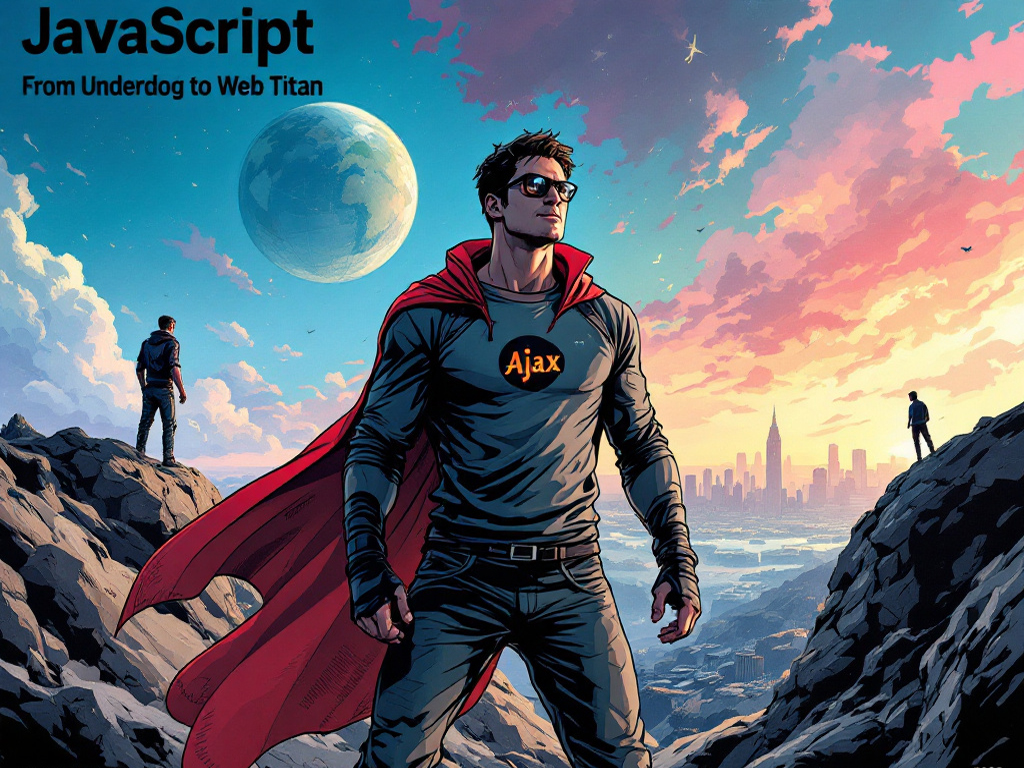Introduction – When the Professor Said: "JavaScript Is Not a Real Language"
There was a time when "real" programming languages like C++, Java, and Python dominated the tech world. And then there was JavaScript, the underdog often ridiculed and underestimated. I still remember my programming professor's words:
"Be careful, JavaScript is not a serious language. It has no classes, no strong typing, it's not like the others." And I, already tinkering with HTML and writing functions to hide divs and display modal windows, was confused. "So what have I been using for months? Magic?"
No, it wasn't magic. It was JavaScript, a language that, despite the criticism, has become the backbone of the modern web. Let's see how it happened.
The Humble Origins of a Giant
JavaScript was born in 1995, created in just 10 days by Brendan Eich for Netscape. The idea was simple: create a lightweight script to complement Java in the browser, useful for light animations and contact forms. The name "JavaScript" was a marketing ploy to ride the wave of the more prestigious Java. But apart from the first four letters, the two languages had nothing in common.
The result was a dynamic language with weak typing and a prototype system instead of classes, inserted into a hostile environment: the browser. Despite these humble beginnings, JavaScript already had the potential to become something great.
Why JavaScript Was Considered "Second-Rate"
In academic and professional circles, JavaScript was viewed with suspicion. Weak typing, the absence of classes (until the introduction of ES6), and the inability to create standalone software relegated it to the role of a "supporting language." Additionally, inconsistencies between browsers made developing with JavaScript a challenging task: the same code could behave differently in Internet Explorer and Netscape.
Yet, despite these difficulties, JavaScript already had hidden strengths that few recognized.
The Hidden Potential of JavaScript
Despite the skepticism, JavaScript already had features that made it a powerful language. Functions as first-class citizens, closures, asynchronous programming, and DOM manipulation were just some of its secret weapons. Additionally, support for functional programming with functions like map, filter, and reduce made it extremely versatile.
It was a living language, but misunderstood. Yet, its time to shine was coming.
The Comeback: JavaScript Becomes a Giant
Starting in the 2000s, something changed. The introduction of Ajax in 2005 made it possible to update parts of a page without reloading it, and JavaScript became essential. The standardization of ECMAScript, culminating in the introduction of ES6 in 2015, brought innovations like classes, let, const, arrow functions, and modules.
But the real turning point came with Node.js in 2009: JavaScript broke out of the browser and became a language for backend development. Frameworks and libraries like React, Angular, and Vue redefined web development, and JavaScript became the backbone of the modern web.
Today: JavaScript Is a Real Language, Indeed
In 2025, JavaScript is one of the most used languages in the world, taught in schools, universities, and bootcamps. Supported by a massive and active community, it is executable everywhere: browsers, servers, IoT, mobile, desktop. The underdog has become the CEO.
The Irony of Fate
The language that "wasn't a language" now supports the entire web. Ironically, many of those who once scoffed at it now write JavaScript for a living. And perhaps, every now and then, they remember when they laughed at it.
But JavaScript didn't take offense. It simply continued to grow, proving that sometimes, the most underestimated things can become the most important.








Leave a Comment